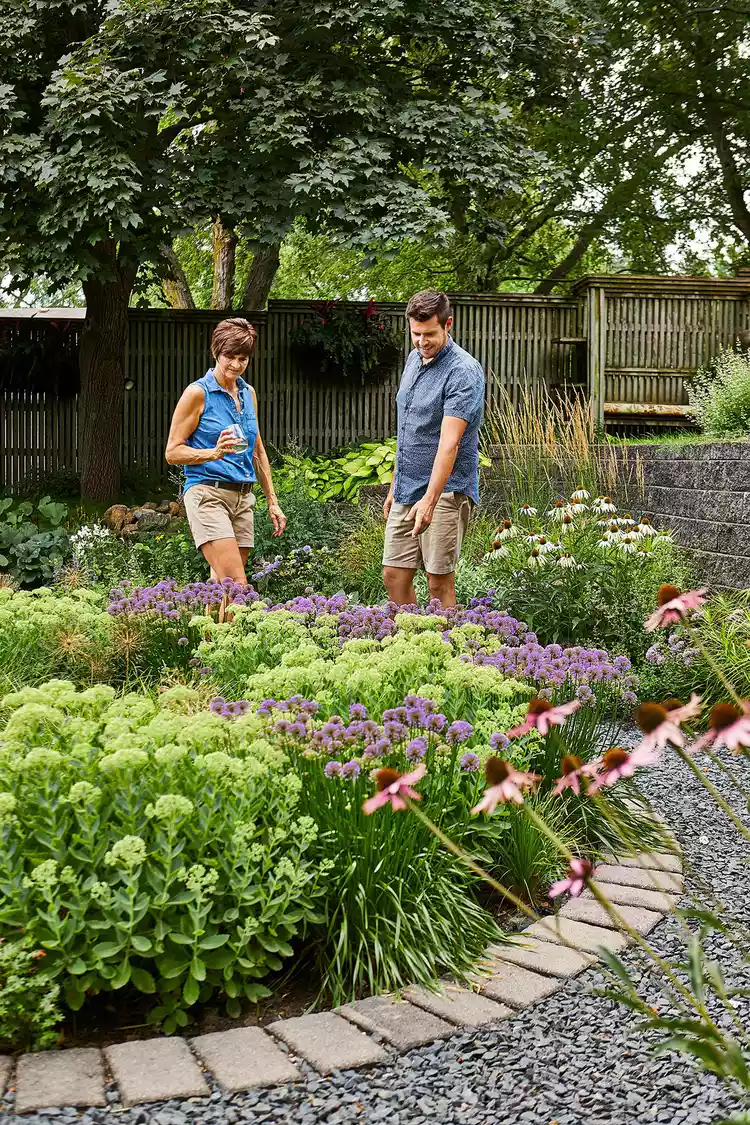When his parents purchased a home in Carroll, Iowa, Austin Eischeid saw what many aspiring garden designers dream of: A blank canvas. "I drove home with a car full of plants the weekend they moved in," says Eischeid, who was working toward a bachelor's degree in horticulture in nearby Ames at the time. He arrived at their new place with a clear vision of a meadowlike landscape of grasses and flowering perennials. He got the idea after hearing horticulturist Roy Diblik lecture on the beauty of naturalistic gardens and their ability to attract pollinators. Practically speaking, Eischeid saw the approach as a way to give his parents a break from frequent pruning, watering, and mowing.
So out went the front yard's clipped lawn, along with shrubs and overgrown vines in the backyard. In their place, Eischeid arranged plants in drifts as they might grow in a prairie, a move he has learned during his time working with Dutch garden designer Piet Oudolf. Eischeid also put techniques from school into practice, such as tightly packing plants to prevent weeds.
Eleven years in, the garden overflows with grasses and flowers and has become a retreat for Eischeid's parents. He himself now lives in Chicago, where he works as a garden designer, but his mom, Belinda, keeps him updated on how plants are filling in and which flowers the bees are visiting. "She sends me 40 to 50 pictures a week, no joke," Eischeid says. "She calls the garden her entertainment."
With the new design, the garden requires almost no care. "In 11 years, it has only been watered five times, when there have been droughts," Eischeid says. His parents skip the typical fall cleanup and let the perennials go to seed as food for birds and winter interest. In early spring, they mow perennial beds to the ground but leave the debris where it falls as compost to insulate the soil and fuel new plant growth.
How to Create Your Own Natural Garden
You don't have to hire a professional landscape designer to make your own garden a little more pollinator-friendly. Eischeid has a few easy tips anyone can use to embrace a more natural style in their garden.
1. Plant Perennials
Eischeid suggests choosing five to seven varieties and planting several in a mass for waves of color and texture. Repeat combinations in different beds, such as clusters of alliums, coneflowers and penstemon next to moor grass.
2. Let Your Plants Grow Naturally
Part of the beauty of a garden is seeing it unfold through the seasons. Eischeid suggests skipping deadheading and instead watching perennials' life cycle: Filling in, flowering, and setting seeds.
3. Design Stopping Points
If you're packing your garden with plants, Eischeid says it's important to create breathers in the form of containers, seats, or fountains. In his parents' backyard, he included three water features and five small seating areas.




















